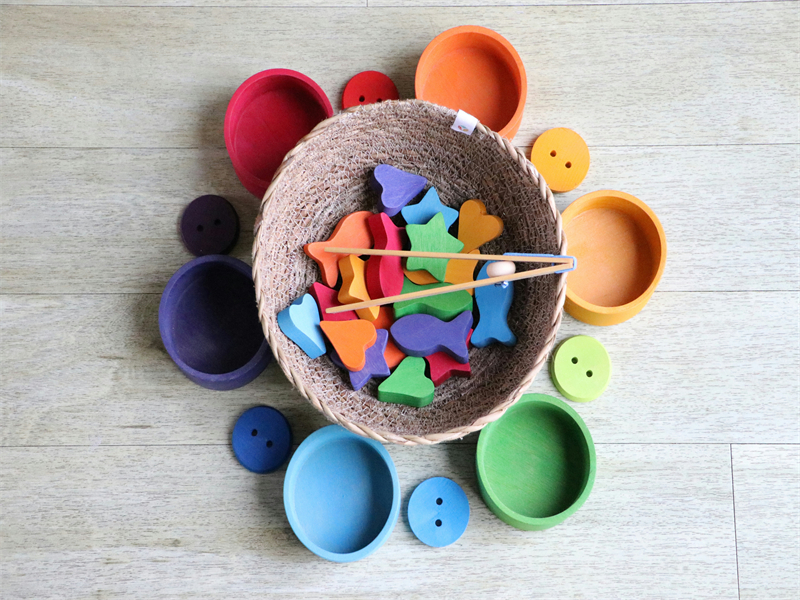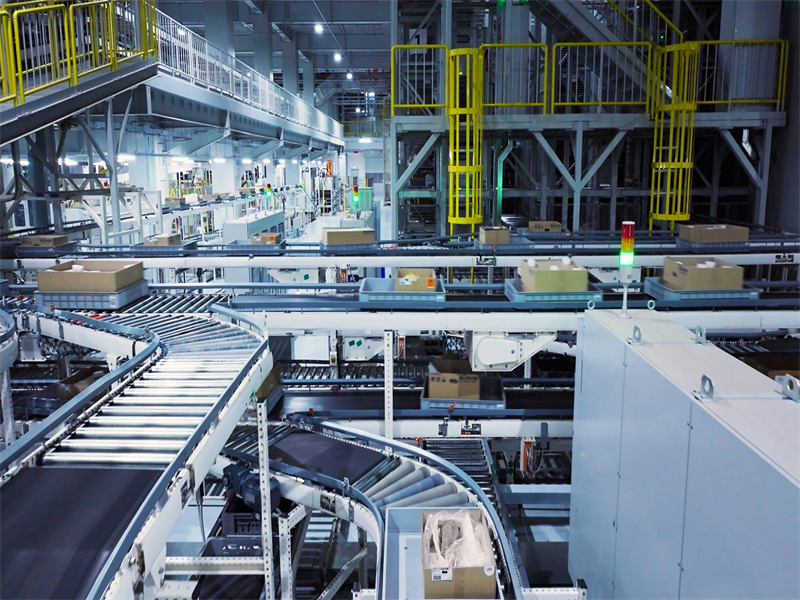Login
Join Free
The Future of Wholesale Toy Sourcing: Trends and Insights for 2025
Introduction: The Evolution of Toy Wholesale Sourcing
The global toy industry is experiencing a period of transformation due to shifts in consumer expectations, advancements in technology, and growing regulatory demands. According to Statista, the global toy market is expected to grow from $141 billion in 2023 to $170 billion by 2025, reflecting a compound annual growth rate (CAGR) of 6.7%. [1] Europe and North America account for more than 60% of the market, driven by steady economic recovery and high consumer spending on children's products.
This dynamic environment creates both challenges and opportunities for wholesalers, distributors, and retailers. As e-commerce reshapes the toy retail landscape and supply chain disruptions linger from the pandemic, sourcing strategies must evolve to remain competitive. Toy companies and wholesalers need to embrace sustainability, leverage emerging technologies, and explore new manufacturing hubs to address market demands effectively.
In this article, we will dive into the key factors influencing toy sourcing in 2025, including how shifting consumer preferences, stricter regulations, and digital transformation are reshaping the industry. This comprehensive look offers insights and strategies for wholesalers to future-proof their business.
1. Shifting Consumer Preferences Reshape Wholesale Strategies
Sustainability as a Core Priority
Sustainability is no longer just a buzzword but a consumer demand shaping the entire toy industry. A Deloitte study from 2023 revealed that 68% of consumers prefer products that prioritize sustainability, and 15% are willing to pay over 20% more for eco-friendly options. [2] For younger consumers, environmental concerns often influence their purchasing decisions more than brand loyalty.
Brands such as LEGO have committed to making all products and packaging from sustainable materials by 2030, reflecting a broader industry trend. Mattel has launched eco-friendly toy lines, using materials like recycled plastics and FSC-certified paper for packaging. Wholesalers must adapt by identifying sustainable manufacturers and integrating such products into their portfolios.
Additionally, governments across Europe and North America are incentivizing the use of eco-friendly materials. For example, the EU's Green Deal aims to make all plastics recyclable or reusable by 2030, directly impacting toy manufacturers and their supply chains. Toys made from biodegradable or renewable materials are gaining traction, allowing companies to align with regulations while meeting consumer expectations.
Education and Personalization Drive Demand
Educational toys continue to dominate the market, with parents prioritizing products that offer cognitive and developmental benefits. According to the NPD Group, STEM (Science, Technology, Engineering, Math) toy sales in Europe and North America grew by 26% in 2022, becoming the fastest-growing toy category. [3] Popular toys in this category include coding kits, building blocks, and robotics sets that encourage problem-solving skills.
Personalized toys, such as customizable dolls and bespoke puzzles, are also gaining popularity as consumers look for products tailored to individual tastes. By sourcing from manufacturers who offer flexible design capabilities, wholesalers can tap into this lucrative trend.

2. Global Supply Chain Challenges Reshape Sourcing Strategies
The Rise of Nearshoring
Global supply chains have faced significant disruption in recent years, from the COVID-19 pandemic to geopolitical tensions. A McKinsey survey from 2023 found that 92% of companies are reassessing their supply chain strategies, with many shifting production to nearshore locations to reduce risks. [4]
For the toy industry, this has resulted in the emergence of nearshoring hubs like Mexico and Eastern Europe. Mexico’s proximity to the U.S. makes it an attractive manufacturing hub, offering lower shipping costs, reduced lead times, and tariff advantages under the USMCA trade agreement. Meanwhile, countries like Poland and Hungary in Europe are attracting toy manufacturers due to their skilled labor force and access to the EU market.
Technology Enhances Supply Chain Transparency
Advancements in AI and blockchain are revolutionizing supply chain management. Blockchain technology allows wholesalers to trace the entire production lifecycle, ensuring transparency and compliance with ethical sourcing standards. AI-powered systems, meanwhile, help predict consumer demand, manage inventory levels, and optimize transportation routes.
For example, companies like Hasbro and Spin Master are integrating predictive analytics to reduce overstock and minimize waste. These technologies not only improve efficiency but also help build trust with environmentally conscious consumers.
3. Emerging Markets and Untapped Opportunities
Asia Beyond China
China has long been the dominant player in toy manufacturing, but rising labor costs and trade uncertainties have shifted attention to other Asian countries. India, for instance, is emerging as a key player in toy exports, supported by government initiatives like the "Make in India" program. In 2023, India's toy exports increased by 23%, reaching $850 million. [5] With lower production costs and improving infrastructure, India is becoming a viable alternative for wholesalers seeking diversification.
Vietnam and Indonesia are also gaining prominence, offering competitive labor costs and favorable trade policies. Vietnam, in particular, has seen significant investment from global toy brands due to its robust manufacturing capabilities and access to Southeast Asian markets.
Africa's Potential as a Future Market
While still in its infancy, Africa’s toy market holds significant potential due to its young and growing population. According to UNCTAD, Africa’s youth population is projected to double by 2050, creating long-term demand for educational and affordable toys. [6] South Africa and Kenya are leading the way with increased investments in local toy manufacturing and distribution.

4. Technology as a Game-Changer
AI in Procurement and Sales
Artificial intelligence (AI) is transforming how wholesalers manage procurement and sales. By analyzing consumer trends and historical data, AI tools can forecast demand more accurately, helping companies reduce overproduction and improve profitability. A Forbes report notes that companies using AI in their supply chains reduced operational costs by an average of 13%. [7]
Blockchain for Ethical Sourcing
Blockchain technology is being adopted to enhance supply chain transparency. For the toy industry, this means verifying that products meet sustainability and labor standards. Companies using blockchain gain a competitive edge by assuring consumers of ethical and environmentally friendly practices.
5. Stricter Regulations Shape Sourcing Decisions
Safety and Compliance
The European Union introduced new regulations in 2023 requiring stricter testing of imported toys. As a result, over 80% of toys sold in Europe now need updated safety certifications to comply with the Toy Safety Directive. [8]
Environmental Mandates
The UK's Green Economy Plan aims to phase out non-recyclable plastics in toys by 2030. Wholesalers must ensure their products meet these requirements or risk exclusion from key markets. [9]

6. The Rise of Digital Platforms for Wholesale
B2B Marketplaces
B2B platforms like Alibaba and Faire are revolutionizing toy sourcing by offering easy access to global suppliers. In 2023, Alibaba reported a 35% increase in toy transactions, with SMEs benefiting the most. [10]
Virtual Trade Shows
Virtual expos have grown in popularity, enabling wholesalers to connect with manufacturers without incurring travel costs. These events offer an efficient way to explore new products and build partnerships across borders.
7. Challenges and Solutions for the Future
Rising Costs and Labor Shortages
Shipping rates remain high, with container costs in 2023 still 220% above pre-pandemic levels, according to Drewry. [11] Labor shortages in key manufacturing hubs like China and Vietnam also threaten production timelines. Investing in automation and workforce development can mitigate these risks.
Balancing Sustainability with Affordability
Eco-friendly materials often come with higher production costs, posing challenges for affordability. Collaborating with suppliers to innovate cost-effective solutions can help balance sustainability goals with price competitiveness.

Conclusion: Preparing for 2025
The wholesale toy sourcing industry is at a turning point. By focusing on sustainability, embracing technology, and diversifying supply chains, wholesalers can navigate the challenges of 2025 while capturing new opportunities. Staying adaptable and forward-thinking will be the key to long-term success.
References
[1] Statista: Global Toy Market Revenue
[2] Deloitte: Sustainability and Consumer Preferences
[3] NPD Group: STEM Toy Sales Growth
[4] McKinsey: Supply Chain Challenges
[5] [6] UNCTAD: India's Toy Export Growth
[7] Forbes: AI Transforming Supply Chains
[8] [9] European Commission: Toy Safety Directive
[10] Alibaba: Toy Transactions Growth
[11] Drewry: Global Shipping Rates

 Русский язык
Русский язык 中文
中文